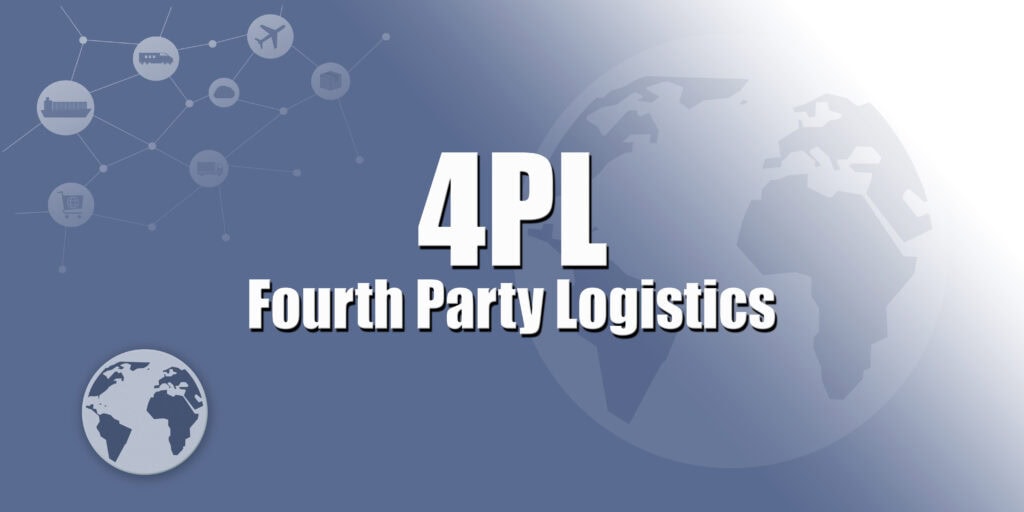4PL: Definition, How it Works, and Benefits

Global supply chains are no longer simple. Businesses now manage hundreds of moving parts across multiple countries, from sourcing to shipping orders, tracking inventory, and handling freight forwarding. Distribution and fulfillment centers serve as strategic hubs in the supply chain, where inventory is stored, managed, and shipped to optimize logistics efficiency. Without the right system, things fall apart. That’s where 4PL comes in—a comprehensive solution designed to address these complex logistics challenges.
Fourth-party logistics, or 4PL, gives companies a way to streamline and control their entire supply chain through one external service provider. It replaces fragmented logistics services with a single partner who handles planning, coordination, and performance.
With rising demand, tighter delivery windows, and increasing supply chain disruptions, understanding 4PL has become crucial for strong, scalable supply chain management.
Defining 4PL (Fourth-Party Logistics)
4PL stands for fourth-party logistics. It refers to a non-asset-based model where one party logistics provider takes full control of the entire supply chain.
Unlike third-party logistics, which focuses on shipping or warehousing, 4PL providers design and manage the whole supply chain network, including all vendors, carriers, and logistics companies. The main differences between 3PL and 4PL are that 3PLs handle specific logistics functions, while 4PLs oversee the entire supply chain and coordinate multiple 3PLs. A 3PL provider typically manages warehousing, transportation, and order fulfillment, whereas a 4PL acts as a strategic partner managing the entire logistics ecosystem. 3PLs generally own physical assets and focus on operational execution, while 4PLs do not own assets and instead manage and integrate the services of various 3PLs. In the logistics management hierarchy, 3PLs and 4PLs play distinct roles, with 3PLs providing transactional services and 4PLs offering strategic oversight. These services include technology integration, analytics, and strategic planning.
By acting as a single point of contact, a 4PL logistics provider coordinates every step of the logistics process, using advanced analytics and logistics expertise to optimize supply chain operations, improve customer satisfaction, and reduce risk. A 4PL provides end-to-end supply chain management and strategic oversight. It becomes a long-term partner in the supply chain strategy.
How 4PL Works?
A 4PL provider builds, runs, and monitors the entire logistics ecosystem for its client. It owns no physical assets but manages all parties involved in the supply chain model. The supply chain is managed by the 4PL, which takes a strategic role in overseeing and coordinating all logistics operations. A 4PL manages the entire supply chain, integrating and optimizing every aspect from procurement to delivery. It often coordinates multiple 3PLs within the supply chain to streamline operations and improve efficiency. Here’s how it works: A 4PL works by acting as a single point of contact, orchestrating all logistics activities to provide comprehensive solutions and value to its clients.
Single Point of Contact
4PL providers serve as a central hub. Instead of coordinating with multiple partners, a company communicates through one team. That improves speed, clarity, and customer communications. Businesses often face delays and confusion when working with disconnected logistics services.
A 4PL clears that up by streamlining everything, from transport services to inventory management. Acting as a single point of contact, it connects every moving piece in the supply chain. Companies gain better supply chain visibility, fewer mistakes, and more control over daily decisions.
End-to-End Supply Chain Management
A 4PL doesn’t just handle shipping. It plans, executes, and improves the full order fulfillment process. From procurement services to last-mile delivery, it oversees every layer of the logistics model. Using real-time inventory tracking, it anticipates customer demand and prevents bottlenecks.
That leads to better, timely delivery and smoother coordination with logistics providers. Businesses benefit from fewer delays, stronger key performance indicators, and smarter resource use. With the right 4PL, companies align operations with long-term supply chain solutions.
Technology and Data Integration
Modern 4PL logistics runs on powerful tech. From AI-based routing to cloud-based dashboards, a 4PL provider uses tools to monitor the logistics process in real time. For example, DHL Supply Chain and UPS Supply Chain Solutions offer integrated systems for shipping costs and order fulfillment.
These platforms connect historical data with current insights, helping businesses predict risks and track key performance indicators. Advanced logistics technology boosts supply chain performance, improves risk mitigation, and enables smart, data-driven decisions.
4PL vs 3PL: Key Differences
4PL and third-party logistics (3PL) both support logistics, but they operate at different levels. When considering 3PL vs 4PL, it’s important to understand how each manages fulfillment processes and their suitability for different business needs. One manages transport and warehousing, the other controls the entire supply chain. Key differences are:
- Level of involvement in operations: 3PL handles specific logistics services like shipping or storing inventory, while 4PL controls planning, execution, and improvement of the logistics process across the supply chain network.
- Type of services offered: 3PL offers limited transportation solutions and warehousing. 4PL providers deliver customized solutions, including supply chain design, coordination, and day-to-day tasks across multiple partners.
- Ownership of assets: 3PL usually owns physical assets like trucks and warehouses. 4PL logistics works as a non-asset-based model, focusing on managing resources from many logistics providers.
- Scope of strategic input: 3PL supports tactical tasks with limited input. Fourth-party logistics 4PL gives strategic oversight, aligning with core values, core competencies, and long-term supply chain management goals.
Benefits of Using a 4PL Provider
4PL helps companies simplify operations and scale quickly. It offers full control over the entire supply chain, helping leaders meet targets and respond faster to logistics changes. Here are the key benefits:
- Centralized supply chain management: Companies benefit from a single partner managing all logistics services, improving logistics management, reducing friction, and streamlining decisions across the supply chain network and integrated supply chain services.
- Reduced operational complexity: Managing multiple partners creates delays. 4PL providers remove confusion by owning the coordination process, ensuring consistency in performance, communication, and logistics operations across all areas.
- Improved scalability and flexibility: 4PL systems adapt fast. Whether handling startup business growth or global expansion, they build scalable supply chain solutions using a vast network of trusted logistics providers.
- Enhanced data visibility and performance monitoring: Using real-time tech, 4PL enables full tracking of shipments, delays, and vendor efficiency. This helps boost supply chain performance and supports smarter decisions with measurable key performance indicators.
- Lower total logistics costs through strategic coordination: Strategic planning reduces waste and optimizes routes. Companies save money, reduce costs, and increase ROI by relying on expert-driven coordination backed by 4PL logistics best practices.
Challenges and Considerations
4PL can bring major improvements to supply chain operations, but it only works well when aligned with the company’s structure, strategy, and long-term logistics needs. Fit and execution matter. Potential considerations are:
Dependency on a Single Provider
Putting all control in the hands of one 4PL logistics partner removes the burden of managing different vendors, but reduces internal visibility and influence over key logistics decisions. Loss of hands-on control might limit flexibility.
When relying on a single source for all service offerings, businesses must fully trust the fourth-party logistics model to deliver long-term performance and adapt quickly. Mitigating that risk means setting clear service level agreements, measurable KPIs, and backup plans.
Higher Initial Investment
Setting up a 4PL system requires time, money, and strong onboarding. Teams must align internal processes with the provider’s platform and tech stack. Businesses often need to rework their inventory management, data systems, and workflows to enable seamless collaboration with 4PL providers.
Delays or missed steps during setup create problems later. While costs may seem high upfront, companies often find cost savings and continuous improvement through better performance and fewer delays in the long run.
Vendor Selection and Compatibility
Choosing the right 4PL logistics partner means more than checking a services list. Fit matters, both operationally and culturally. Look for a provider with experience in your industry, a track record of continuous improvement, and strong digital capabilities.
Tools like real-time dashboards and advanced analytics should be part of the offering. A match between your company’s goals and the provider’s strengths can impact everything from performance to customer satisfaction.
Logistics Companies and Their Role
Logistics companies are the backbone of efficient supply chain management, ensuring that goods move seamlessly from suppliers to customers. In today’s complex business environment, their role extends far beyond basic transportation or warehousing—they are strategic partners that help businesses manage, optimize, and scale their entire supply chain.
Fourth party logistics (4PL) providers stand out by offering a single point of contact for all logistics services, coordinating every aspect of the supply chain from procurement and inventory management to order fulfillment and shipping. Unlike traditional third party logistics (3PL) providers, who typically focus on specific functions like warehousing or freight, 4PL logistics providers oversee the entire supply chain network. This comprehensive approach allows businesses to streamline operations, reduce costs, and gain real-time visibility into every stage of their logistics process.
A key advantage of working with a 4PL provider is their ability to integrate advanced technology and data analytics into supply chain operations. By leveraging real-time tracking, automated reporting, and predictive analytics, 4PL providers help companies make smarter decisions, anticipate disruptions, and respond quickly to changing market demands. This level of supply chain visibility is especially valuable in industries like ecommerce, where customer expectations for fast, reliable shipping are higher than ever.
In the ecommerce sector, 4PL providers play a crucial role in managing multiple 3PL partners, coordinating inventory across various warehouses, and ensuring that orders are picked, packed, and shipped efficiently. This integrated approach not only improves order fulfillment speed and accuracy but also enhances customer service and loyalty by providing reliable delivery options and transparent tracking.
For businesses seeking cost-effective solutions, 4PL logistics providers offer scalable services that adapt to growth, seasonal fluctuations, and new market opportunities. Their expertise in logistics management and project management enables companies to focus on their core business, while the 4PL partner handles the complexities of supply chain operations.
Ultimately, logistics companies—especially those offering fourth party logistics 4PL services—are essential for businesses aiming to stay competitive in a fast-paced, global marketplace. By providing end-to-end supply chain management, advanced technology, and a single point of contact, 4PL providers help companies achieve greater efficiency, lower costs, and deliver exceptional customer experiences.
How 4PL Supports Complex Supply Chain Demands
4PLs support complex logistics challenges by offering end-to-end control, data-driven decisions, and infrastructure that adjusts to change across industries, borders, and customer needs. Real-time information is crucial for supply chain visibility, enabling better decision-making and transparency throughout the logistics process.
- Multi-Channel Fulfillment: 4PL logistics supports e-commerce, retail, and B2B shipments from one platform. That allows brands to scale faster, meet demand, and align operations across different customer channels.
- International Shipping Management: Handling global transport services means dealing with customs, compliance, and local partners. A 4PL organizes all international routes, reducing delays and lowering risks in cross-border operations.
- Reverse Logistics Optimization: Returns and repairs need more than a warehouse. A smart fourth-party logistics partner manages all reverse logistics, turning cost centers into efficient, trackable loops.
- Demand Forecasting and Inventory Planning: By integrating information from across the supply chain, 4PL providers improve forecasting. That avoids overstock, boosts inventory management, and matches supply with real-world customer demand.
- Enhanced Data Visibility and Performance Monitoring: 4PLs provide real-time information and ensure timely updates on inventory and delivery times, giving businesses constant visibility into order status and KPIs.
- Integrated Logistics Ecosystems: 4PL links systems, vendors, and workflows under one digital roof. That improves coordination, supports better decisions, and ensures total alignment with business goals across all locations.
4PL providers solve evolving challenges through smarter planning, real-time tools, and a flexible model built to scale with complex, scalable logistics solutions.
Is 4PL Right for Your Business?
Companies that face growth, complexity, or internal gaps in expertise may gain the most from switching to a 4PL structure. Here’s who 4PL is best suited for:
- Rapid growth and international expansion: Businesses entering new markets often struggle with fragmented logistics. A 4PL creates global networks that handle cross-border movement, compliance, and high-volume transport services.
- Complex, multi-party logistics networks: Using too many vendors creates confusion. 4PL logistics simplifies communication and tracks performance across all parties’ logistics, from suppliers to delivery agents.
- Limited in-house logistics expertise: Companies without logistics teams can’t scale efficiently. A fourth-party logistics model fills that gap with experts and tools to handle end-to-end supply chain operations.
- Desire for strategic supply chain optimization: If the goal is better visibility, cost savings, and long-term supply chain solutions, a 4PL brings the tools and strategy needed to drive continuous improvement.
Conclusion
4PL simplifies logistics by managing the entire supply chain through one strategic partner. Businesses gain control, improve supply chain performance, and respond faster to changing logistics needs using expert-driven support.
Switching to a fourth-party logistics model helps companies streamline operations, cut delays, and boost efficiency. Evaluate your current logistics model to see if partnering with a 4PL provider will support growth, lower risk, and deliver long-term cost savings.


